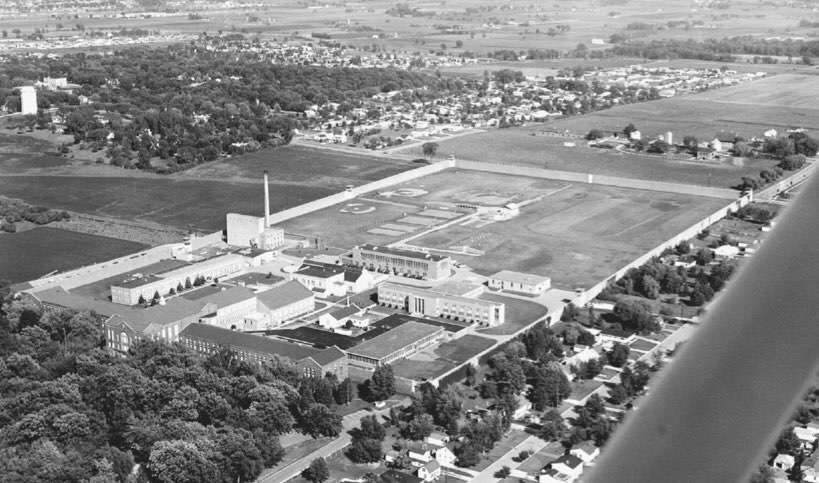
By Kris Leonhardt
Editor-in-Chief
Continued from the previous edition: https://gopresstimes.com/2023/02/19/green-bay-correctional-institution-chronic-overcrowding/
In October 1915, excavation began on a new cell wing, only to be put on hold as inmates were allocated for work on the Green Bay-De Pere concrete road.
Hampered by weather and other projects, work on the wing lasted for six years.
In 1916, work also began on a 22-foot high wall around the facility that was two feet thick at the base and one foot at the top, and took seven years to complete.
In 1920, the reformatory began construction on what was considered to be one of the largest barns in Brown County at the time, along with two silos from the brick being made at the facility.
“The state reformatory has one of the best herds of cattle in the state and the demand for its milk exceeds the supply,” an article in the Press-Gazette stated.
Work was also started on five guard towers to oversee the now 29 acres of property.
By June 1921, the reformatory was up to 364 men and youth in residency.
As contract labor came under question in the state, the reformatory shifted to an education and vocational training focus.
Programs were instituted to provide an education in engine repair, auto body work, cabinet making, plumbing and other vocational skills.
The training method was well received and soon picked up by other institutions.
In 1930, discussions on the expansion of the facility were met with resistance, as its location between the growing communities of De Pere and Green Bay became a desirable area for residency.
Area leaders saw the property surrounding the facility as prime real estate.
The board of control agreed on the matter and discontinued any expansion on the facility and the Green Bay and De Pere communities were allowed to grow together.
The matter of the facility’s location came up once more in the early 1960s, but the reformatory would stay in the town of Allouez.
In 1953, a vocational academy was built and three years later, a new heating plant was constructed.
A decade later, a treatment center including medical, dental, and clinical services was added.
In 1968, a new chapel was added, and parole and treatment were emphasized at the facility.
But, growing amenities didn’t stop the reformatory from having its challenges with the inmates.
On Nov. 12, 1971, 15 reformatory staff members and three inmates were injured during a riot, which also caused extensive damage in portions of the reformatory.
The riot began at 5 p.m. when an inmate threw a chair through a window.
Over 350 area law enforcement personnel came to the aid of the facility, as inmates were subdued by tear gas.
It took 90 minutes for law enforcement and staff to get things under control; meanwhile, fires had been started in several areas.
Three inmates – deemed the “Milwaukee 3” – were charged in the riots, as public demonstrations in Milwaukee and Madison called for the release of the three, stating they were “political prisoners.”
The riot brought up serious issues with the facility’s current design.
Continued in an upcoming edition
